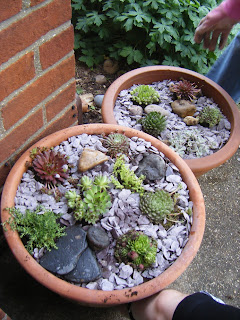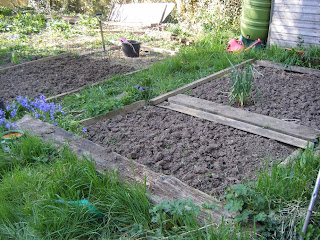I have been doing stuff. Just not updating my blog. Because I'm terrible at it.
With my mum and brother, I potted up some succulents for outside the front door:
Pretty, huh? The slate goes purple in the rain so they look really cool in all weathers.
I also made a raised bed for the garden because one of my vegetable beds is underneath an oak tree so it's difficult to dig with all the roots.
Don't laugh! I'm awful at woodwork, I know. I want to get better. Need to take evening classes or just practice lots, I guess.
I also cleaned up some skulls, but I've only got photos of them before. They were deer skulls, one adult female and one juvenile.
And lastly, Friday was good Friday. So I made execution bread:
It was delicious, a mix of strong white bread flour, coconut, honey, oatmeal, yeast and chocolate chips, glazed with a milk and honey mix. I'll post the recipe if I make it again, I have a habit of measuring things in handfuls and dashes.
What the hell do I label this post as?
With my mum and brother, I potted up some succulents for outside the front door:
Pretty, huh? The slate goes purple in the rain so they look really cool in all weathers.
I also made a raised bed for the garden because one of my vegetable beds is underneath an oak tree so it's difficult to dig with all the roots.
Don't laugh! I'm awful at woodwork, I know. I want to get better. Need to take evening classes or just practice lots, I guess.
I also cleaned up some skulls, but I've only got photos of them before. They were deer skulls, one adult female and one juvenile.
And lastly, Friday was good Friday. So I made execution bread:
It was delicious, a mix of strong white bread flour, coconut, honey, oatmeal, yeast and chocolate chips, glazed with a milk and honey mix. I'll post the recipe if I make it again, I have a habit of measuring things in handfuls and dashes.
What the hell do I label this post as?















































